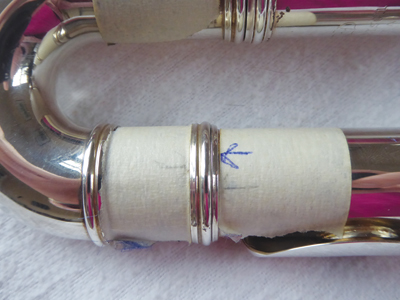
For those interested in learning to play alto flute, the first step is to find an instrument. As with any instrument, be sure to try the instruments yourself. Physical characteristics vary from one player to the next, so an instrument that responds perfectly for one person may not work at all for another. If you do not live near a music store, most flute sellers will send instruments to try for a week if you pay shipping costs.
Budget
Establish your budget. Altos range in price from $1,500 to $15,000. If you are going to play a lot, then a more expensive alto flute may be a worthwhile investment. Decide whether you want a curved or straight headjoint, or both. Most flute sellers will include both curved and straight headjoints to try if the manufacturers have that option. Experiment with both since the curved headjoint may affect sound and intonation. More importantly, pay particular attention to how your right hand feels. The reach for the right hand is longer for an alto with a straight headjoint than one with a curved headjoint. Even though I am around six feet tall, I find altos with straight headjoints too long for my right hand to be comfortable. Crutches for the left hand are available for alto and bass flutes but I find them to be too unstable. I have also sometimes forgotten I was using one, and the crutch went crashing to the floor when I took flute from lip.
Test Sound and Intonation
Test the flutes for tone quality, intonation, response, and evenness of sound throughout the range. This last characteristic is particularly important for less expensive instruments. I have tried several lately as a possible replacement for my current alto. The newer instruments were much easier to play in tune than mine, but they often lacked a consistency of sound throughout the range. Most sounded good in the first octave, but were much weaker and had significant sub-tones in the upper octaves.
Ask a Colleague to Listen
When comparing instruments, it is helpful to have someone listen to you play. If possible, have them listen at a distance from you. To compare intonation and tone quality in the various ranges, play low and high range scales, like the first line of the first Taffanel et Gaubert Daily Exercise No. 1, both as written and up an octave. Use different articulations to check the response of the instrument. It is important to also play something lyrical in order to evaluate the tone quality of each instrument. I like to use the first movement of Johann Sebastian Bach’s Flute Sonata in C, BWV 1033 as it can serve to compare both tone quality in the Andante and the articulation response in the Presto.
When playing for colleagues, do not tell them which manufacturer made the instrument as that might prejudice their opinions. Provide the listener a pen and paper to write thoughts about the various parameters, whether that be tone quality, intonation, articulation response, etc. Some people like to hear each of the areas separately on the different instruments while others prefer to hear everything on one instrument before moving to the next. It is important to find someone who either plays the flute or is familiar with it. Non-musicians are unlikely to discern the subtle differences between instruments.
Assembling the Alto
When putting an alto flute together, I have found it is slightly different from the way I assemble my C flute. I do keep the same relationship of embouchure hole to the rest of the instrument. If you select a curved headjoint, pretend the curve is not there and align the embouchure hole to the rest of the instrument just as you do on the C flute so it will balance in the same way. With the footjoint, I turn the keys much more toward me than I do with the C flute so my right hand fifth finger can comfortably reach the bottom keys.
Learning to Play
After purchasing your new alto, go slowly in learning to play it. Since the instrument is larger and heavier, pay particular attention to the right hand. If you experience any pain, stop and take a break. The larger size and lower range also mean that the aperture should be larger. I separate my teeth more and keep my throat open, especially in the lower range. Playing alto flute requires a slow but steady air stream, and the volume of air should be greater than on C flute, both to get a good sound and to maintain good intonation.
To warm up, I use the same exercise material as I do with the C flute. Besides the Taffanel et Gaubert 17 Big Daily Exercises, there are several excellent method books available. Many of the beginning flute methods also work well with the alto.
Benefits
Playing any of the low flutes adds a new dimension to your flute playing. When playing in a flute choir, the alto parts are often the tenor or bass lines of the composition. Learning to play harmony develops the ear for both intonation and balance. There are many excellent, affordable instruments available today, and I encourage you to take the plunge and enjoy the entire flute family.






